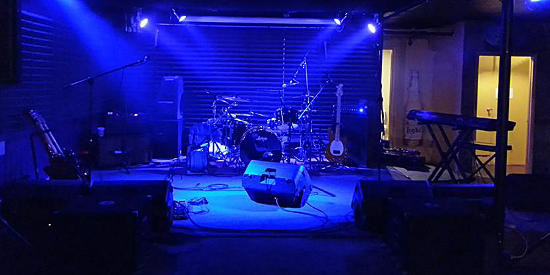When I say “small,” what I mean is “seating capacity for 200 or fewer,” amongst other things.
Please Remember:
The opinions expressed are mine only. These opinions do not necessarily reflect anybody else’s opinions. I do not own, operate, manage, or represent any band, venue, or company that I talk about, unless explicitly noted.


I’m a fan of defining words clearly, no doubt about it. When it comes to subjective terms being used in technical contexts, my blood pressure can rise in a hurry. “Loud” means different things to different people. “Great monitor mix” means different things to different people.
I mean, even something as not-subjective-sounding as, “50% less lead guitar in this wedge” means different things to different people. Somebody might actually want the guitar down by 3 dB, which is actually half power. Somebody might think that 50% less is -6 dB. Some folks think it’s -9 dB. Geeze.
Subjectivity – it’s not as easy as it looks. Anyway…where was I?
If you’re U2, or Metallica, or Pink Floyd, or [insert ginormously popular act here], “small venue” could probably mean anything less than 20,000 seats. For other bands, filling a 1000 seat auditorium would be a huge show. The biggest. In the history of ever.
For the purposes of this site, my definition of “small venue” looks like this:
- 200 patrons or fewer can be seated.
- The square footage of the stage plus the audience area is 3500 square feet or smaller.
- Backline producing x dB SPL (Sound Pressure Level) at the downstage edge – the place where the stage meets the rest of the venue – is perceived by someone sitting in the farthest seat as producing a minimum of x-12 dB SPL. This is assuming that the venue is otherwise empty and unobstructed.
(That last condition is pretty darn easy to accomplish in a 100′ long venue with a stage that’s 25′ deep. The distance from the downstage edge to the back wall is 75′. The farthest away that anyone can sit is only four times as far away from the backline as the downstage edge. The level decay at a fourfold increase in distance is 12 dB SPL, and that’s assuming that there are no acoustic reflections in the venue at all. It’s theoretically possible to build an indoor venue where the SPL contribution from acoustical reflections is negligible, but it would be really, really expensive.)
I should mention that each point is not necessarily dependent on any other point. You could build a venue where the longest dimension was only 30′, and then add a soundproof wall between the performers and the audience. The wall would break the x-12 dB SPL condition for the farthest seat, but the capacity and square footage points would hold up just fine.
Of course, I do have some subjective definitions of a small venue:
- Anywhere that loading in an 8×10 bass cab causes someone (especially the audio tech) to think/ mutter/ say “Geeze,” or “Why?”
- Anywhere that micing backline is optional for FOH (Front Of House) sound.
- Anywhere that the settings on an amp from a previous gig or practice cause someone (especially the audio tech) to think/ mutter/ say/ exclaim “Geeze,” “Wow,” “Gosh,” “Whoa,” “Holy !@#$,” or “That’s only on [number less than 5]?!”
- Anywhere that somebody’s prized tone causes intestinal discomfort, bleeding, psychological problems, etc. (Also, sometimes where somebody’s prized tone is caused BY psychological problems, but that’s another issue).
- Anywhere when a drummer is playing at a volume that seems easy and comfortable to him/ her/ it, and yet the SNARE HIT -ompletely drowns ou – TOM ROLL -verything els- KICK KICK KICK TOM ROLL KICK KICK CRASH CRASH CRASH SNARE HIT -hinks he’s John Bonha- SNARE FLAM SNARE FLAM KICK KICK CRASH -oo loud with earplugs.
- Anywhere that the PA can be run at a continuous level that’s no more than 1/8 of its maximum continuous power, and still be considered “loud” by half the audience or more.
There’s the implication here that musicians and audio techs can make almost any venue too small, but that’s probably a topic for another time.